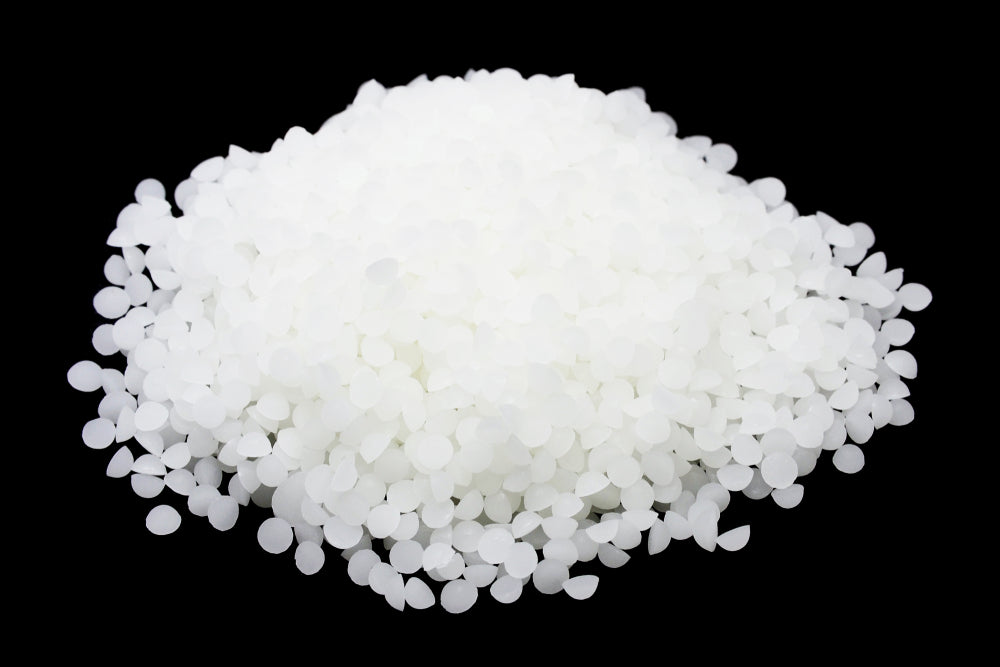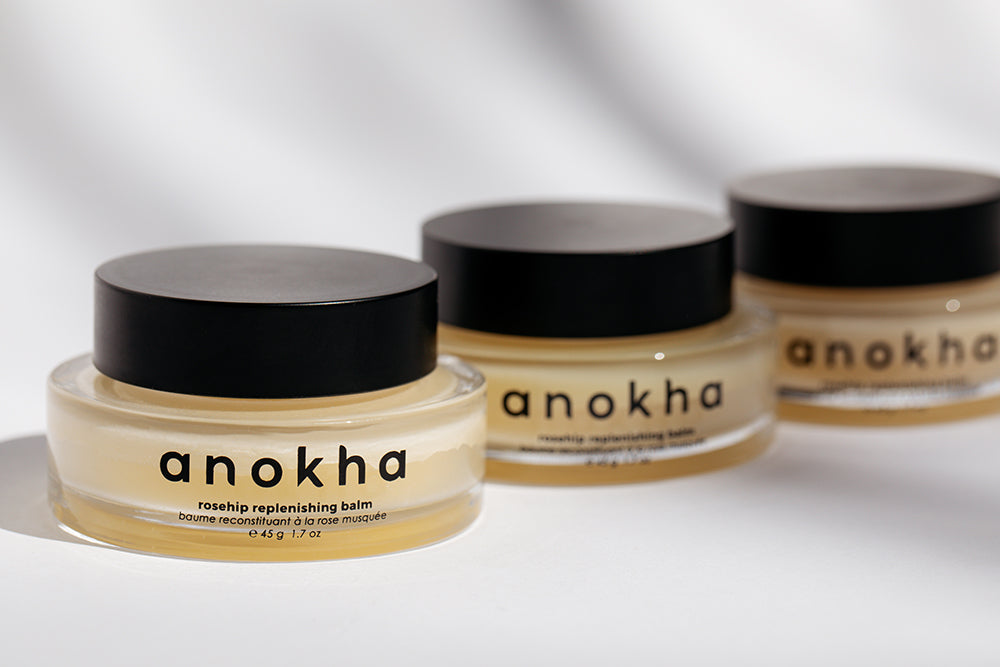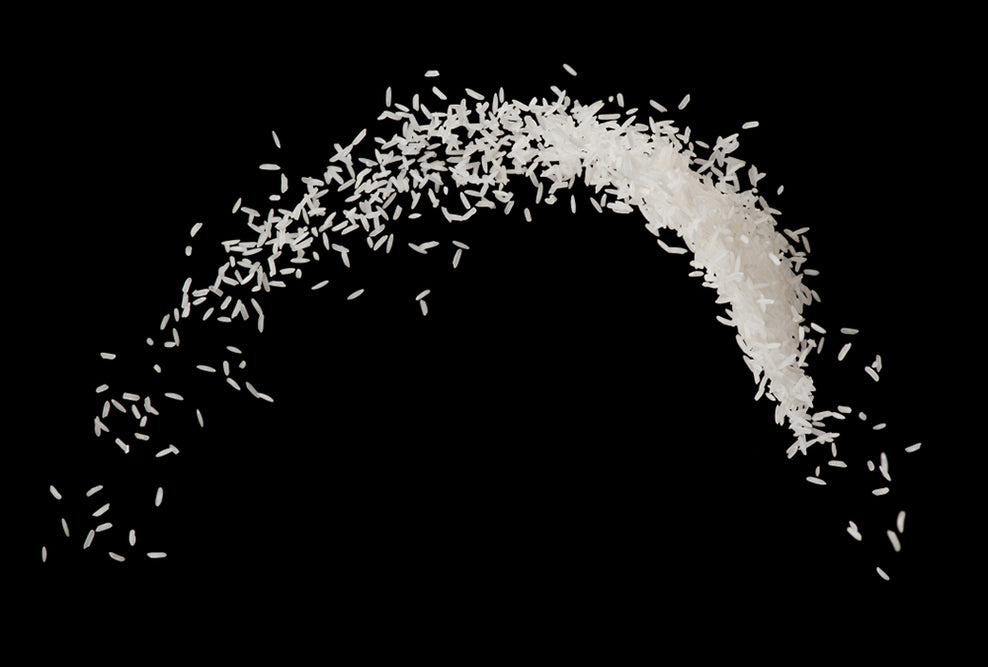
ingredient focus: beeswax

the bottom line
Beeswax, an ubiquitous ingredient in cosmetic preparations, is typically used as a thickening agent, emollient, and humectant. Also believed to have healing properties, it’s commonly found in cosmetic formulations including balms, lipsticks, and salves. Although the rise in vegan skincare has led some brands to substitute waxes such as sunflower seed, carnauba, and rice bran waxes, beeswax remains unique in its texture and functional uses. Read on to discover more about this lovely lipid.
first layer: the history
The use of beeswax dates to ancient Egypt when it was the primary ingredient used in embalming and mummification. Beeswax was also the main ingredient in many recipes for the preparation of ointments and creams to treat burns, wounds, and soothe joint pain. Hippocrates himself recommended the use of beeswax for tonsillitis. In ancient Rome, beeswax was used in combination with olive oil and rosewater to treat burns and bruises. The first cosmetic cream created by the Greek physician Galen in 150 BC contained beeswax, olive oil, and water. Ayurvedic medicine still uses beeswax for the care of abrasions and burns, as well as for cracked heel skin.
second layer: the science
Waxes are substances produced by animals and plants to protect themselves from environmental insults. In plants, wax is found on leaves, fruits, and seeds and functions to repel water and micro-organisms. In animals, waxes can cover skin, hair, feathers, and fur with the same function of repelling water and preventing desiccation. Vegetables waxes include candelilla, carnauba, and jojoba waxes, while beeswax, lanolin, and spermaceti wax are derived from animals. Chemically, waxes are complex mixtures of esters of long-chain fatty acids, long-chain alcohols, hydrocarbons, plant pigments, sterols, and triglycerides.
Beeswax is produced by glands located in the abdomen of the worker bee. Secreted in liquid form, beeswax solidifies upon contact with air. The color of beeswax varies depending its age and on the amount of plant pigment that enters it from pollen and propolis. Yellow beeswax is produced by melting honeycombs in hot water. To create white beeswax, yellow wax is oxidized by ultraviolet light or by an emulsion of hydrogen peroxide. The quality of the beeswax is dependent upon the extraction method, which can be done via either water or solvent extraction.
What is beeswax? Beeswax is a complex mixture of over 300 components including hydrocarbons, free fatty acids, esters of fatty acids and alcohol, diesters, and exogenous substances. The main components of beeswax include squalene, 10-hydroxy-trans-2-decenoic acid (also known as royal jelly acid), and chrysin, all of which have antibacterial effects. Beeswax has shown antibacterial activity against Staphylococcus aureus, Streptococcus epidermidis, Streptococcus pyogenes, Bacillus subtilis, Pseudomonas aeruguinosa, Escherichia coli, and the yeast Candida albicans. When used in conjunction with honey and olive oil, beeswax has been found to be synergistic in the inhibition of Staphylococcus aureus and Candida albicans. Chrysin also has antioxidant and anti-inflammatory properties. Beeswax additionally contains sterols which help to reduce transepidermal water loss.
Beeswax has a crystalline structure which continues to increase upon storage concomitant with an increase in its stiffness and plasticity.
third layer: skincare
With its unique composition, beeswax possesses several properties with significant benefits for the skin:
- occlusive effect: beeswax creates a protective layer that reduces transepidermal water loss, helpful in atopic dermatitis.
- thickener: beeswax can help to thicken the lipid phase of a formulation.
- emulsion stabilizer: beeswax helps to stabilize water in oil emulsions although it does not act as a true emulsifier.
- emollient: beeswax can help to soften the skin.
- antibacterial: the antibacterial activity of beeswax supports the use of beeswax in the treatment of wounds, atopic dermatitis, and psoriasis.
- anti-inflammatory and antioxidant: both properties of beeswax help with soothing irritated and inflamed skin.
fourth layer: how we do it
Beeswax is the key component of our lip butter, a potent formulation with an organic blend of moisturizing botanicals extracts to soften and nourish delicate lip skin. With castor seed oil, organic beeswax, camellia oil, sunflower seed oil, and a touch of peppermint, it's the perfect pucker for that goodnight kiss.
Dropping soon, our rosehip replenishing balm. Created especially for Dr. Naidu’s surgical patients, this body balm combines rosehip seed oil with mango butter, beeswax, olive oil, gotu kola, arnica, and sea buckthorn seed oil to gently soothe irritated skin, help decrease bruising and scarring, and soften rough and dry patches of skin. It’s a beauty balm for targeted renewal.
All this and more at www.anokhaskincare.com .
xx
anokha
references:
1. Cosmeceuticals. 2005. Zoe Diana Draelos, ed. Philadelphia: Elsevier Saunders. 1st edition.
2. Janes D, Kocevar Glavac N. “Beeswax”, in Modern Cosmetics. 2018. Velenje, Slovenia: Sirimo dobro besedo, d.o.o., p. 178.
3. formulabotanica.com
4. Kurek-Górecka A, Górecki M, Rzepecka-Stojko A, Balwierz R, Stojko J. Bee Products in Dermatology and Skin Care. Molecules 2020; 25(3): 556-573.
5. Fratini F, Cilia G, Turchi B, Felicioli A. Beeswax : a minireview of its antimicrobial activity and its application in medicine. Asian Pac J Tropic Med 2016; 9: 839-843.
6. Kedzia B, Holderna-Kedzia E. The use of beeswax in medicine. Pasieka 2014; 3. https://pasieka24.pl/index.php/pl-pl/pasieka-czasopismo-dla-pszczelarzy/108-pasieka-3-2014/1319-wykorzystanie-wosku-pszczelego-w-lecznictwie
7. Buchwald R, Breed MD, Bjostad L, Hibbard BE, Greenberg AR. The role of fatty acids in the mechanical properties of beeswax. Apidologie 2009; 4: 585-594.
definitions:
antioxidant: an antioxidant is a compound that inhibits oxidation. free radicals create oxidative stress and an inflammatory response which in turn can damage DNA and result in injury to the epidermal and dermal layers of the skin. in the skin, this manifests as premature aging with decreased elasticity leading to increased wrinkling, age spots, and decreased skin tone. antioxidants stabilize free radicals, which in turn limits their ability to damage the body.
atopic dermatitis: a type of eczema remarkable for red, flaky, itchy skin, typically affecting the inner elbows and behind the knees. it's often seen with allergic rhinitis, hay fever, and asthma.
emollient: a substance that softens or soothes the skin
occlusive: an occlusive ingredient provides a protective seal over the skin which prevents the loss of hydration into the environment. occlusives also help to keep irritants from entering the skin.
for more beauty definitions, explore the glossary.
faq's:
what is a wax?
waxes are substances produced by animals and plants to protect themselves from environmental insults.
is beeswax good for skin?
beeswax is good for the skin because it has antibacterial, anti-inflammatory, and antioxidant properties.
what are some beeswax benefits for skin?
beeswax has emollient properties to help soothe and soften skin, as well as occlusive benefits which help to decrease water loss through the skin.
what are some beeswax benefits for lips?
beeswax is a very common ingredient found in lip balms, lip butters, and lipsticks because it helps to create an occlusive layer on the thin skin of the lips. this layer helps to prevent the lips from drying out.
is beeswax a vegan ingredient?
no, as a product derived from honeybees, beeswax is not considered to be vegan.



leave us a comment
This site is protected by hCaptcha and the hCaptcha Privacy Policy and Terms of Service apply.